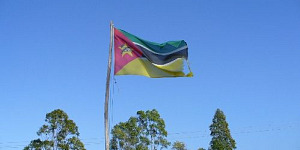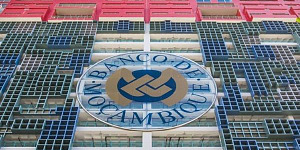 Moody's Investors Service has assigned local and foreign-currency issuer ratings of B1 to the government of the Republic of Mozambique, with a stable rating outlook.
Moody's Investors Service has assigned local and foreign-currency issuer ratings of B1 to the government of the Republic of Mozambique, with a stable rating outlook.
The assignment of the B1 ratings and stable outlook are based on the following drivers:
1) Mozambique's small and undiversified economy, with high levels of poverty and very low GDP, but also favourable growth prospects given the country's significant natural resources.
2) Low fiscal strength, characterised by relatively high levels of public debt given the significant infrastructure investment needs, the likely decline in external donor support over the coming years and the rising recourse to commercial borrowing from abroad.
3) Low institutional strength with weak governance indicators, which are likely to improve over time given the support from the International Monetary Fund (IMF) in the form of a Policy Support Instrument (PSI).
4) Moderate external risks given the very large current account deficits, which are however, financed to an important degree by inflows of foreign direct investment into the natural resources sectors. Political risks, in particular emanating in the context of the future distribution of the natural resource wealth, are also a consideration.
RATINGS RATIONALE
-- SMALL, UNDIVERSIFIED ECONOMY WITH HIGH LEVELS OF POVERTY BUT CONTINUING STRONG GROWTH PROSPECTS
The first driver underlying Moody's assignment of a B1 sovereign rating to Mozambique is the small size of its economy, with nominal GDP of only US$15 billion. More than 50% of the population live below the poverty line, despite a decade of strong economic growth, and the economy remains undiversified, with subsistence agriculture accounting for the bulk of employment. Mozambique's GDP per capita is among the lowest among all Moody's-rated sovereigns in purchasing power parity (PPP) terms, with $1,169 as of 2012, which is below that of other B1-rated sovereigns such as Zambia ($1,722), Kenya ($1,802) or Senegal ($2,027).
At the same time, the growth outlook for Mozambique is very good, with the increasing exploitation of the country's vast natural resources -- especially its large coal deposits, which contributed 2.4% of nominal GDP in 2012 and are likely to represent 4% of GDP in 2014 and 6.5% by 2017, according to the IMF. The recent discovery of large natural gas reserves off the Mozambican coast in the Rovuma Basin holds even more potential to transform the structure of the economy. Construction of an LNG extraction site, which is anticipated to be the second-largest in the world, is due to begin in 2014, with extraction expected to start in 2020. However, Moody's notes that the country faces severe infrastructure bottlenecks which could hamper the full development of the country's natural resource sectors. Assuming that the projects in the natural resource sectors go ahead as planned, Moody's expects that the economy will continue to grow at a rapid pace and points to the IMF's forecast of 8% real GDP growth per annum for Mozambique for the coming years.
-- LOW FISCAL STRENGTH, WITH RELATIVELY HIGH DEBT LEVELS AND DECLINING DONOR SUPPORT OVER THE COMING YEARS
The second key driver of Mozambique's rating is its low fiscal strength. The country's budget deficits have been large over the past few years (around 6-7% of GDP after accounting for grants) driven by high capital spending and only moderate tax revenues that is typical for very poor countries. Mozambique has so far benefited from significant financial support from international donors, with grants accounting for around 5% of GDP, of which 2% of GDP is extended in direct budget support and the remainder for specific projects. However, support from donors is expected to decline over the coming years: according to the IMF, total grants will fall by 3-5% per annum in nominal terms from 2015 onwards and reach around 3% of GDP in 2017. At the same time, investment spending will likely remain high at around 13% of GDP per annum, or 40% of total spending. The public wage bill -- the Mozambican government's other major expenditure category, accounting for around 30% of total spending -- will also remain elevated, as part of ongoing recruitment in education, health care and the extension of social welfare linked to the government's Poverty Reduction Program. Consequently, Moody's expects Mozambique's budget deficit to remain large in the years ahead. The natural resources sectors have so far contributed relatively little in tax revenues, and this is unlikely to change significantly before the start of LNG production in 2020.
Moody's also notes an increase in Mozambique's public debt in recent years, even though a large share of the resource sectors' investment needs (including infrastructure) is being financed by the private sector. According to the IMF's debt sustainability analysis, the country's public debt ratio is expected to continue rising moderately and peak at around 53% of GDP in 2017, and decline thereafter given that the investment phase will have ended and significantly higher export earnings are expected to flow in. However, the IMF points out that debt sustainability requires that the country's envisaged LNG production indeed materialises, and recommends that the scaling-up of infrastructure investment and the additional external borrowing proceed at a more moderate pace than has been the case so far. Moody's views positively the government's commitment to limiting its external borrowing on commercial terms under the Policy Support Instrument (PSI) with the IMF to a maximum of US$1.6 billion in 2013 and US$2 billion by 2014. Moreover, due to the mostly concessional nature of borrowing, Mozambique's debt remains very affordable with an interest-to-revenue ratio of around 4%, which is significantly lower than it is for most B1-rated peers.
-- WEAK INSTITUTIONAL STRENGTH (SIMILAR TO PEERS)
The third driver of Mozambique's B1 rating is its weak institutional strength, which is to some extent mitigated by its track record of political stability and overall effective and prudent monetary policy. According to indicators published by the World Bank and Transparency International, Mozambique scores very low in terms of competitiveness, 'ease of doing business', transparency and corruption. However, Moody's believes that this is partly offset by the extended agreement with the IMF on a PSI, which focuses on ensuring proper management of the transition to a resource-rich economy, both with respect to the distribution of the resources wealth/poverty reduction and the sustainability of public finances.
Moody's also notes that monetary policy has been effective and prudent overall. The Banco de Mozambique has been successful in lowering inflation expectations and maintaining stability in the foreign exchange market. The main drivers of inflation are food prices, especially given that the country is vulnerable to periodic flooding, which can result in prices spiking outside the purview of monetary control.
-- MODERATE EXTERNAL AND POLITICAL RISKS
The fourth driver underpinning Moody's B1 rating for Mozambique is the moderate event risk posed by the very large current account deficits, which amounted to 36% of GDP last year. While a large share of the deficit is covered by inflows of foreign direct investment into the natural resources sectors, the debt-financed part of the external deficit is nevertheless large and forecast to rise quite substantially in the coming years, according to the IMF. We also generally consider political event risk to be moderate in countries which are poor and dependent on the price and export of a limited number of commodities.
WHAT COULD MOVE THE RATING UP/DOWN
Moody's would consider upgrading Mozambique's rating over the coming years if economic growth continues to be strong and if the government develops a track record of smooth management of the resource boom, in particular with respect to containing its budget deficits and public debt.
The rating could come under downward pressure if public debt, and in particular non-concessional external borrowing, were to increase at a much faster pace than is currently envisaged and agreed with the IMF. Much steeper or more rapid reduction of external donor support would also be negative for the rating.
COUNTRY CEILINGS
Moody's has also assigned the following ceilings for domestically-based issuers of corporate and structured finance ratings:
Local-currency country ceiling for bonds and deposits: Ba2
Foreign-currency country bond ceiling: Ba3
Foreign-currency deposit ceiling: B2.
The local-currency country ceilings of Ba2 reflect the maximum credit rating achievable in local currency for a debt issuer domiciled, or a deposit in a bank, in the Republic of Mozambique. The ceilings on foreign-currency bonds and bank deposits capture foreign-currency transfer and convertibility risks.
GDP per capita (PPP basis, US$): $1,024 (2012 Actual) (also known as Per Capita Income)
Real GDP growth (% change): 7.5% (2012 Actual) (also known as GDP Growth)
Inflation Rate (CPI, % change Dec/Dec): 2.1% (2012 Actual)
Gen. Gov. Financial Balance/GDP: -3.9% (2012 Actual) (also known as Fiscal Balance)
Current Account Balance/GDP: -34.6% (2012 Actual) (also known as External Balance)
External debt/GDP: 32.8%
Level of economic development: Low level of economic resilience
Default history: No default events (on bonds or loans) have been recorded since 1983.
Source: Moody's





































